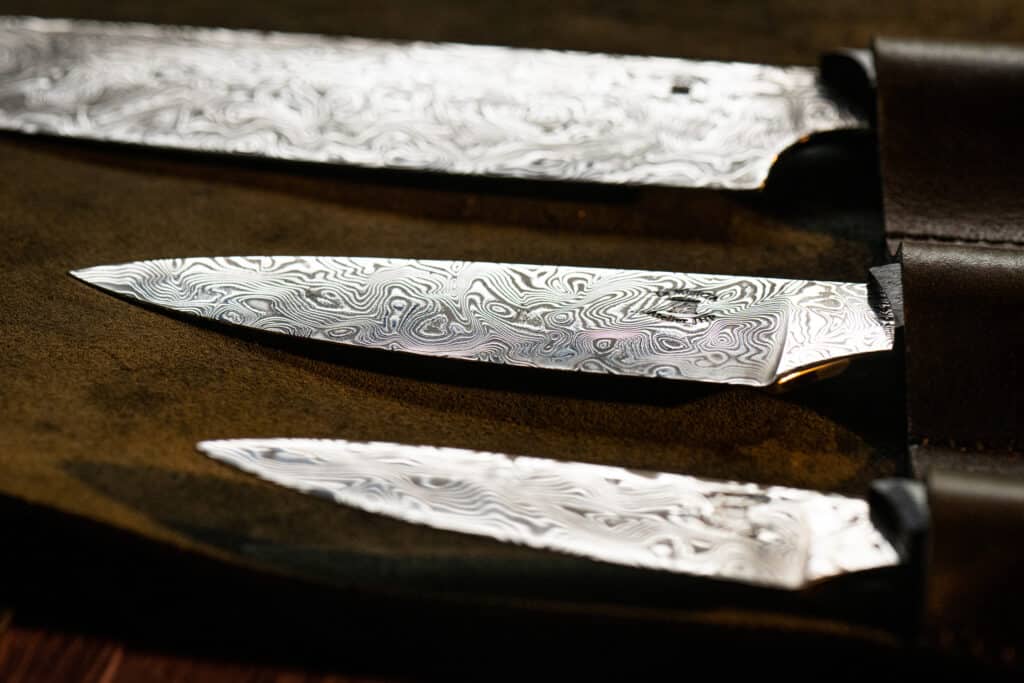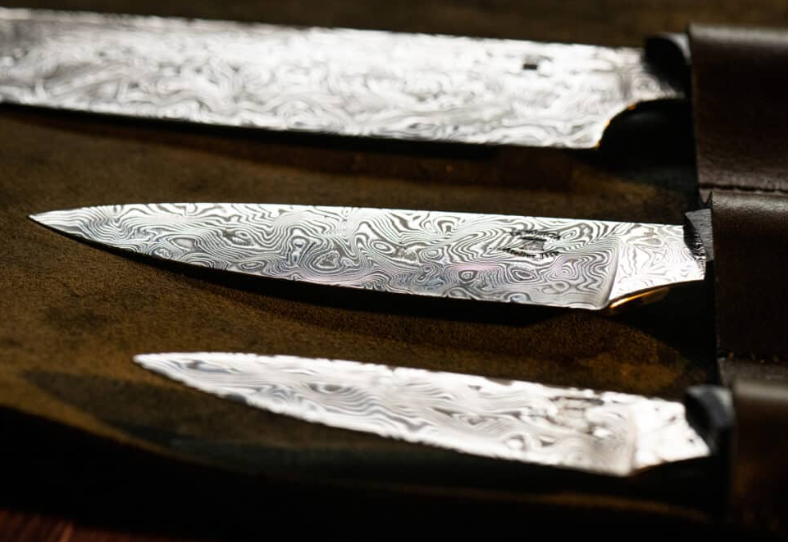Damascus steel, a highly esteemed material in the world of bladesmithing, comes with an enticing variety. The name originates from Syria’s capital city where it was first produced
Crucible Steel
Crucible steel is a type of Damascus steel that has been highly sought after for centuries due to its exceptional strength and durability. This particular variation of Damascus steel is made by melting iron and carbon together in a sealed container called a crucible, hence the name.

The mixture is then heated to extreme temperatures, allowing impurities to separate from the metal, resulting in a higher quality end product. Once cooled, the crucible steel can be forged into blades with distinct patterns that are both visually stunning and functional.
This ancient technique requires extensive knowledge and skill but produces knives that are revered for their sharpness and resilience.
Pattern-Welded Steel
This method involves layering and welding together different types of steel to create patterns on the blade.
The process starts by stacking alternating layers of high-carbon and low-carbon steels, which are then heated, hammered, and forge welded multiple times to create a solid billet. By manipulating the layers through twisting or folding, unique patterns emerge during each forging cycle.
Once the desired pattern is achieved, the billet is shaped into a blade and undergoes further heat treatment to enhance its hardness and flexibility. Pattern-welded steel allows artisans to showcase their creativity while also adding strength and visual appeal to Damascus knives.
Stainless Damascus Steel
Stainless Damascus Steel is a type of Damascus steel that combines the beauty and strength of traditional Damascus with the added benefit of corrosion resistance. Unlike traditional carbon-based Damascus, this stainless variation incorporates elements like chromium and nickel to prevent rusting and staining.
The process of making stainless Damascus involves using two or more types of stainless steels, layering them together, and then forging them into a solid billet. This billet is shaped into a blade, etched to reveal the intricate patterns characteristic of Damascus steel, and finished to create a sharp cutting edge.
Stainless Damascus Steel knives are highly prized for their durability, low maintenance requirements, and unique aesthetic appeal – making them popular among both professional chefs and knife enthusiasts alike.
